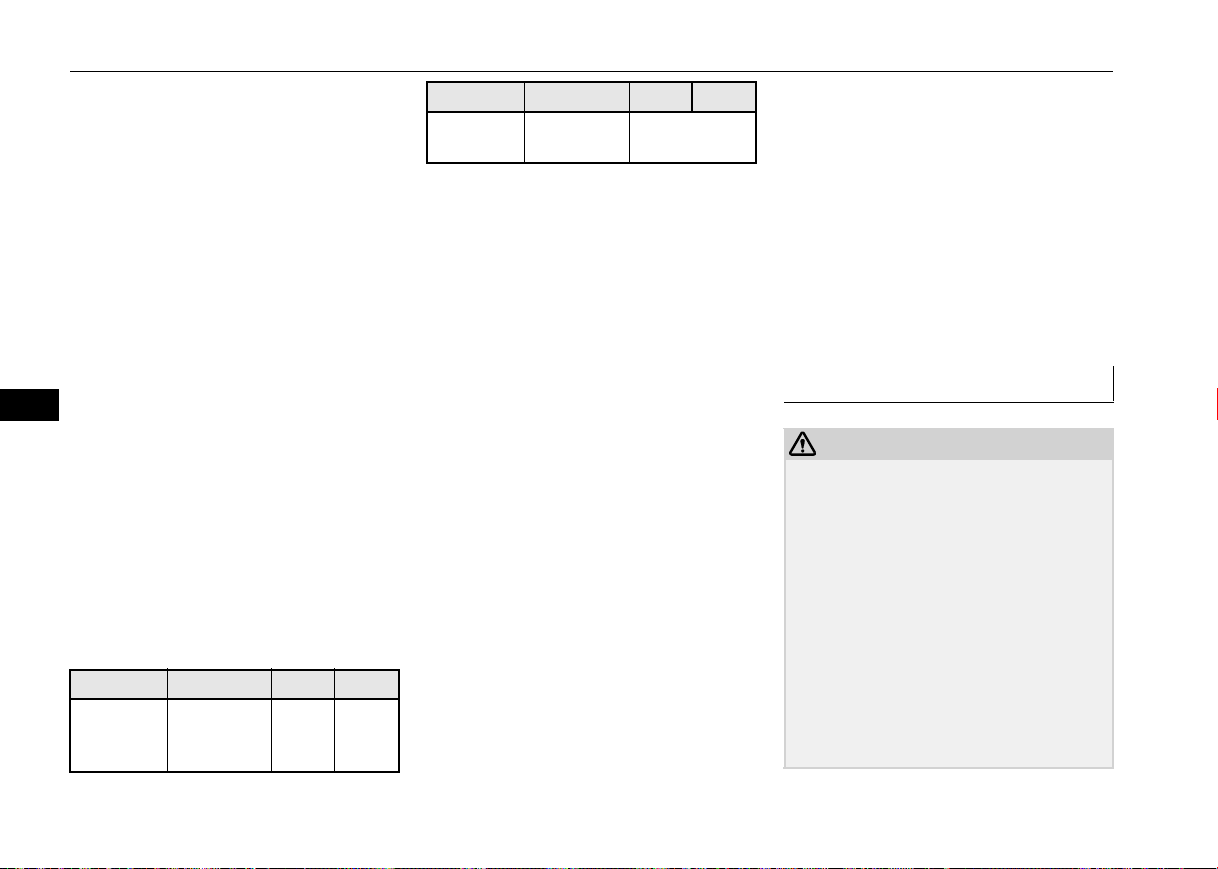Loading ...
Loading ...
Loading ...

Tires
9-16 Vehicle care and maintenance
9
Economy
The wrong tire pressure can cause uneven
wear patterns in the tire tread. These
abnormal wear patterns will reduce the
tread life, and the tire will have to be
replaced sooner.
Too little pressure also makes it harder for
the tire to roll, and this uses up more fuel.
Ride comfort and vehicle stability
The superior riding experience built into
your vehicle partly depends on the correct
tire pressure. Too much pressure gives an
uncomfortable and jarring ride. Too little
pressure feels as if your vehicle is slow to
respond.
Unequal tire pressures can make steering
your vehicle uneven and unpredictable.
The tire pressure for your vehicle under nor-
mal driving conditions is listed on the placard
attached to the driver’s door sill.
(Refer to “Tire and loading information plac-
ard” on page 11-3.)
The recommended inflation pressures under
normal driving conditions should be used for
the tires listed below.
Tire pressures should be checked, and
adjusted if necessary, at least once a month.
Pressures should be checked more often
whenever weather temperatures change
severely, because tire pressures change with
outdoor temperatures. The pressures listed
are always “cold inflation pressure”.
Cold inflation pressure is measured after the
vehicle has been parked for at least three
hours or is driven less than 1 mile (1.6 km)
after having been parked for three hours.
Cold inflation pressure must not go above the
maximum values molded into the tire side-
wall. After driving several miles, your tire
inflation pressure may increase 2 to 6 psi (14
to 41 kPa) from the cold inflation pressure.
Do not let air out of the tires to get back to the
specified cold pressure, or your tires will be
too low.
Check your tires each time you refuel. If one
tire looks lower than the others, check the
pressure for all of them.
You should also take the following safety pre-
cautions:
Keep your tires inflated to the recom-
mended pressures. (See the tire and load-
ing information placard attached to the
driver’s door sill.)
Stay within the recommended load limits.
Make sure that the weight of any load in
your vehicle is evenly distributed.
Drive at safe speeds.
After filling your tires to the correct pres-
sure, check them for damage and air
leaks. Be sure to reinstall the caps on the
valve stems.
N00939601509
Item Tire size Front Rear
Normal tire
P215/70R16
P225/55R18
240
KPA,
35 PSI
240
KPA,
35 PSI
Compact
spare tire
T155/90D16
T155/80D17
420 KPA, 60
PSI
Item Tire size Front Rear
Replacing tires and wheels
CAUTION
Avoid using different size tires from the one
listed and the combined use of different
types of tires, as this can affect driving
safety.
Refer to “Tires and wheels” on page 11-7.
On all-wheel drive vehicles, always use tires
of the same size, same type, and same brand,
and which have no wear differences. Using
tires that differ in size, type, brand or the
degree of wear, will increase the differential
oil temperature, resulting in possible damage
to the driving system. Further, the drive train
will be subjected to excessive loading, possi-
bly leading to oil leakage, component sei-
zure, or other serious problems.
BK0277700US.book 16 ページ 2019年3月8日 金曜日 午前9時23分
Loading ...
Loading ...
Loading ...